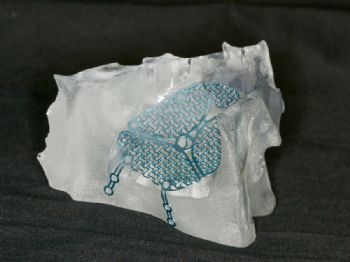
The University Hospital Basel in Switzerland reports that a Stratasys (
www.stratasys.com) 3-D printer has helped with reducing the time taken to perform complex cranio-maxillofacial surgeries, thanks to the ability to make surgical guides that allow surgeons to cut surgery times by more than 33%.
This reduced time minimises the risk of complications and improves patient outcomes; it also results in savings of more than $2,000 per operation.
The hospital’s Florian Thieringer said: “Many of our trauma patients arrive with complex life-threatening injuries that necessitate the creation of quick and efficient treatment plans.
“Having access to in-house 3-D printing on demand has revolutionised the way we work, most notably for cranio-maxillofacial injuries.”
The hospital uses 3-D printed models to plan any interventions and implants required during surgery.
These models are particularly helpful in cases of orbital floor and serious zygomatico-maxillary complex fractures, which restrict visibility and access, thereby increasing the risk of error.
Commonly, the hospital team used titanium meshes to plan reconstructions for the surgery of these fractures, but these meshes require manual forming in the operating theatre in order to obtain an exact fit, increasing both the theatre time and the cost.
The team says that the Stratasys 3-D printer now allows production of a patient-specific model before entering the operation theatre, with the printing done within two hours of receiving the CT scan.
Dr Thieringer said: “With the highly accurate 3-D printed models, standard titanium implants can be shaped individually to create a hybrid patient-specific implant.
This reduces any cutting and suture time needed during the operation, as well as the need to source patient-specific titanium implants from external suppliers.
"Moreover, the 3-D printing of accurate anatomical models also enables a better explanation of procedures to patients, putting them more at ease prior to surgery.”